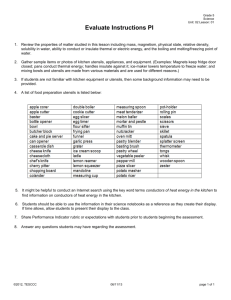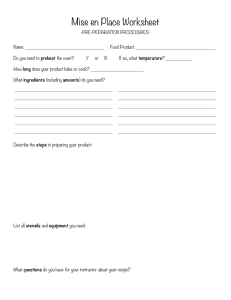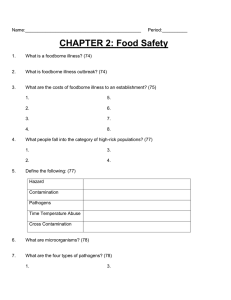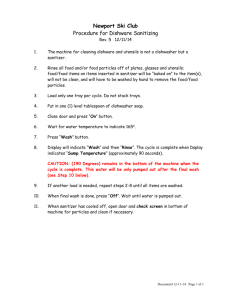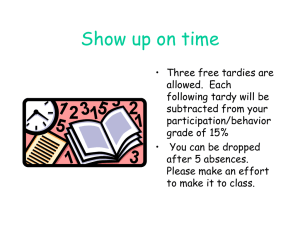I B E ,
advertisement
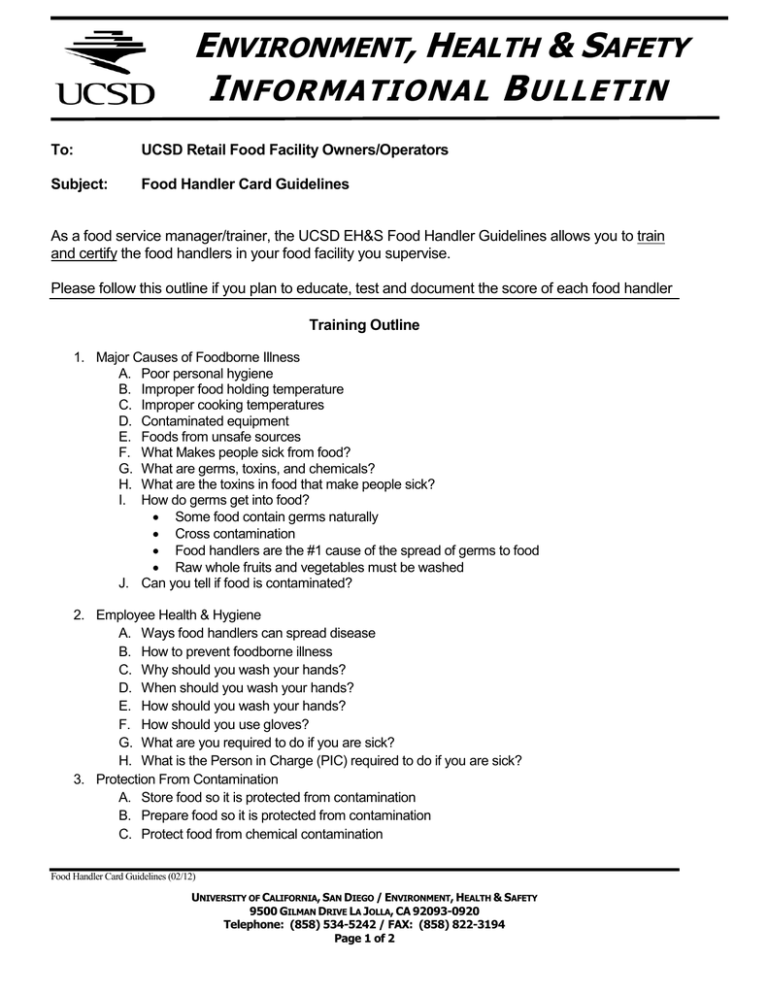
ENVIRONMENT, HEALTH & SAFETY I NFORMATIONAL B ULLETIN To: UCSD Retail Food Facility Owners/Operators Subject: Food Handler Card Guidelines As a food service manager/trainer, the UCSD EH&S Food Handler Guidelines allows you to train and certify the food handlers in your food facility you supervise. Please follow this outline if you plan to educate, test and document the score of each food handler Training Outline 1. Major Causes of Foodborne Illness A. Poor personal hygiene B. Improper food holding temperature C. Improper cooking temperatures D. Contaminated equipment E. Foods from unsafe sources F. What Makes people sick from food? G. What are germs, toxins, and chemicals? H. What are the toxins in food that make people sick? I. How do germs get into food? Some food contain germs naturally Cross contamination Food handlers are the #1 cause of the spread of germs to food Raw whole fruits and vegetables must be washed J. Can you tell if food is contaminated? 2. Employee Health & Hygiene A. Ways food handlers can spread disease B. How to prevent foodborne illness C. Why should you wash your hands? D. When should you wash your hands? E. How should you wash your hands? F. How should you use gloves? G. What are you required to do if you are sick? H. What is the Person in Charge (PIC) required to do if you are sick? 3. Protection From Contamination A. Store food so it is protected from contamination B. Prepare food so it is protected from contamination C. Protect food from chemical contamination Food Handler Card Guidelines (02/12) UNIVERSITY OF CALIFORNIA, SAN DIEGO / ENVIRONMENT, HEALTH & SAFETY 9500 GILMAN DRIVE LA JOLLA, CA 92093-0920 Telephone: (858) 534-5242 / FAX: (858) 822-3194 Page 1 of 2 D. Protect food from physical hazards 4. Temperature Control A. Required holding temperatures B. Temperature recording logs and their use C. How to calibrate your thermometer D. Adequate cooking E. Proper cooling procedures F. Safe food thawing G. Proper reheating 5. Consumer Advisories 6. Approved Food Sources A. Food served or sold at a food facility must be from an approved source B. Shellfish ( i.e., oysters, mussels, clams) must be from safe sources and handled safely 7. Equipment and Utensils A. Why is it important to wash and sanitize dishes & utensils? B. Steps in washing multiuse utensils by hand C. Steps in washing dishes and utensils by machine D. Utensils storage and use E. What else needs to be kept clean? F. Use of wiping cloths properly 8. Pest Control A. What can you do to control cockroaches, flies, mice, and rats? Stave them out Keep them out Eliminate: Destroy their hiding places Keep them from multiplying 9. Garbage and Refuse A. How often should trash be taken out? 10. Signs and Other Requirements A. Required signs must be posted B. Inspection reports Demonstrations: Please include these actual demonstrations in your training. Proper hand-washing using the employee’s hand-washing sink (not dishwashing or vegetable sink) Proper setup of 3-compartment sink for manual sanitizing Correct techniques for handling/carrying utensils Heating, thawing, reheating, holding, refrigerating foods Correct storage of food Where to find and how to use food thermometers Correct cleaning techniques Garbage disposal and pest control techniques Page 2 of 2
